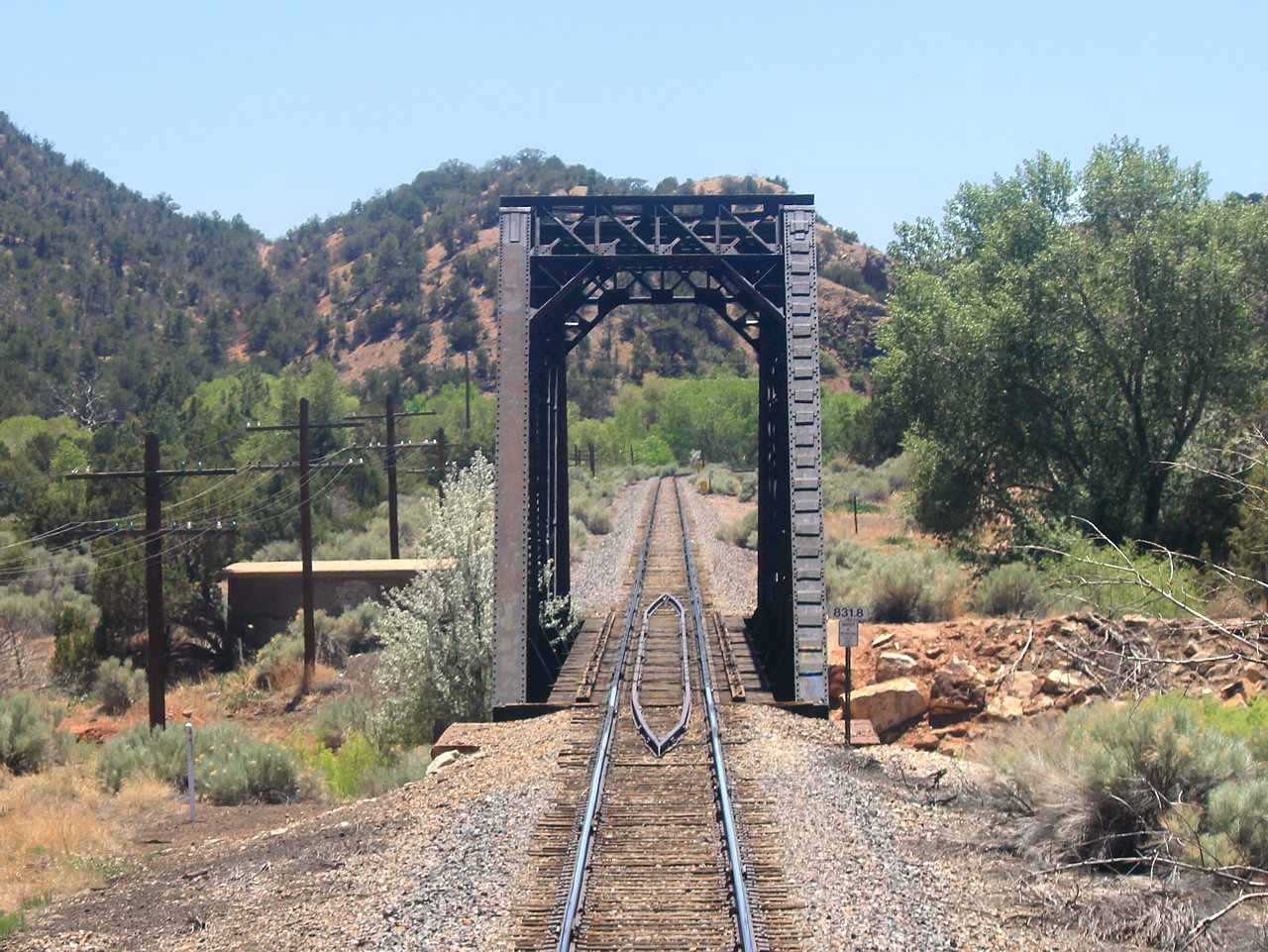For those of you who keep hearing stories about the Southwest Chief being threatened by some sort of line closure this is the thing that people are talking about. The former ATSF Raton Pass route from La Junta, CO through to Albuquerque and Dalies (Belen) stopped seeing through freight service several years ago and moreover has almost zero local freight between Lamy, NM, and Trinidad, CO. Because the route traverses not one but two 7000 foot mountain summits with all the associated risks and maintenance headaches it was no wonder that BNSF eventually chose to reroute its through trains via the flatter and faster route through Amarillo, TX.
In this second half of the set of photos covering the Glorieta Sub we will see the first of these two summits at Gloeieta before descending through the foothills that lays between the summit and Las Vegas. You can find more info on the Glorieta Sub here. BTW all the stuff about use of "retainers" translates to "royal pain in the ass" if you're a sufficiently heavy freight train.
Departing Lamy we find ourselves once again in CTC territory as the ATSF invested the money in better signaling in areas of difficult mountainous terrain where pre-arranged meets could not always be honored. However we will bid adieu to the signal-related Automatic Train Stop system which will not appear again until Trinidad, CO. Of course the slow speeds in this area make such a system largely unnecessary. Here at WEST LAMY interlocking note the illuminated 'S' marker light that instruct trains to stop and throw the hand switch into the siding. Just because its CTC doesn't mean that it comes with power operated switches XD
While the Chief has nowhere near the scenery of the Zephyr it does channel it a bit in the Cougar Canyon just north of Lamy.
The bridge in Cougar Canyon.
One more shot looking back.
Truss bridge at MP 831.8.
We slowed to a stop at the CANYONCITO siding to meet our opposite westbound Train 3. I guess we were a bit early for the planned meet as we stopped on the main while 3 leapfrogged via the siding. This was the first CTC siding with power switches since Railrunner territory so I guess it can be tricky setting up movements here. Note the 20mph Approach PSR signals for Cougar Canyon and the Clear signal off the siding at West CANYONCITO interlocking.
Train 3 was headed up by Amtrak P42DC's #131 and #116. Behind them was one of Amtrak's legit heritage baggage cars #1257.
End of Train 3 with Superliner #34056.
Rock cut east of the Canyoncito siding.
The Glorieta pass is also shared with Interstate 25, which will now shadow our trip just as I40 had across Arizona. Interesting how the interstate highway system effectively plagiarized the routes of the existing rail network instead of coming up with their own routes.
Moving on towards the Glorieta summit we find a pair of inert ATS inductors which warn trains of approaching severe speed restrictions. I also spotted another sign hinting of the lines past transporting heavy mainline freight trains.
The Glorieta Station is now a US post Office. This also marks the approximate location of the Glorieta Summit, some 7400 feet above sea level.
Pair of ATSF automatic searchlights with mountains in the background. Note the bases with built in battery wells.
The town of Rowe, NM with some local color in the form of a trailer well supplied with paints. The ROWE siding is one of those with the hand operated switches and marks the eastern limit of this CTC island.
East end of the GISE siding with mountains in the background and the TWC-ABS signal clearing behind my train.
MP 807 view of the escarpment that blocks the path of the railroad forcing it to head west to the Glorieta Pass. Note Interstate 25.
While I was at my position at the back of the train I had my second unit man take some video out the side windows.
Crossing the Pecos River at Ribera, NM. It's funny to see all these epic western rivers that look more like eastern creeks. It seems all a river needs in the west to become a part of lore is year round water.
Aside from Cougar Canyon the most significant rail engineering feature on this Subdivision is the Ribera Horseshoe Curve on the descending grade east of Ribera, NM. Here we see our engines #167 and #118 entering the western leg of the shoe.
Again exiting the west leg of the curve.
More good news as our train gets back into Semaphore Country with some examples seen here at Chapelle's Siding.
Surviving ATSF steel water tower MP789 on Chapelle's Siding.
Since semaphores are all about moving how about some videos?! Remember this is TWC-ABS so the blades clear after passage in most cases.
ABS Semaphores at MP 783.
Blades at the east end of the OJITA siding.
Somebody get a snow fence, the desert is knocking at MP 772.5.
There's an eerie feeling as we arrive in Las Vegas, like Buzz Killington showed up and all the revelers packed up and moved to a different state. The once sizable ATSF yard has been mostly ripped out and what hasn't is covered in that especially dark brown rust that indicates that trains haven't traveled them in a very, very long time.
Amtrak station at Las Vegas, NM.
That's it for this episode. Tune in next week as we travel the flat plain to Raton, NM then up and over the high point of the Santa Fe at the Raton Pass.



























No comments:
Post a Comment